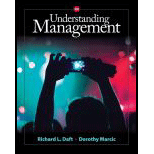
To determine:
This question seeks to point out behavior characteristics of best and worst teams in terms of personal satisfaction and team performance. Two teams are formed and each member lists out his team's positive traits leading to effective performance (called 'This') as well as negative traits implicit in worst ranking. We then have to discuss factors influencing presence of behaviors responsible for effective team work ('This' factors) and those influencing presence of "That" behaviors which prevent effective team work.
Introduction:
Team performance and personal satisfaction are interrelated. If there is no personal satisfaction effective teamwork will be a far cry. So effective leaders have to be aware of these factors so that these positive behaviors can be developed and nurtured in order to get superior world class team performance.
Here we have formed two teams 'A' and 'B'. A is ranked best team; conversely, B is ranked worst team. These teams are judged on the basis of a "Special Project work related to finding best multi bagger value creators by the team to invest one billion dollar spare funds lying with the company. In the group the team members are as under (For the benefit of readers, creativity and best world- view on project we have listed here 4 top richest billionaires)
Group members are- Team A- 1. Warren Buffet, 2. J.K.Rowling
Team B 3.Bill Gates 4. Peter Lynch
I am member of team A and representing Warren buffet as the group member.
For team performance and personal satisfaction, various positive traits like cohesiveness, raising the bar, flexibility and feedback are needed. Factors having these traits are in Team A which is winner and in 'This' category with behaviors for effective team work. Lack of these factors has prevented growth of team B in "That' category with behaviors impeding efficient team work & performance. In a class scenario each of the 4 members discusses essential ingredients to make effective team working.
Want to see the full answer?
Check out a sample textbook solution
Chapter 14 Solutions
Understanding Management (MindTap Course List)
- Read the following below and answer the question that follow: “Sally, we have an opportunity to address the safety issue that would strengthen our relationship as team heads. Would you be willing to discuss it with me?” Sally responds and says, “Yes, I would.” What step in the connect model does this statement represent? Select one: A.Optimize safety B.Narrow to one issue C.Neutralize defensiveness D.Commit to a relationship E.Explain and Echoarrow_forwardDescribe the components of the team-building cycle and why it is important to understand each phase. In addition, select one of the six stages and provide a personal/professional example of how you or a current/former leader performed this step during a team-building engagement. In response to other students, continue to share and compare worthy experiences/scenarios to validate your understanding of this team-building process.arrow_forwardGive (3) reasons why you think a team was needed for the design of a complex project like the distribution center for HP 2. How would you classify the team in Question #1? 3. Are the advantages accrued from specialization lost or diminished when individuals from different specialties are put together on a team? Discuss. 4. Do you think Loretta Wilson’s team achieved its objective? State your reasons for your conclusion.arrow_forward
- Define team building. Is team building a soft skill? You realized that whenever you worked in a group, you always met project objectives. Describe five qualities that contributes to reaching the goals?arrow_forwardAside from changing group members, what should leaders do if they find their team lacks certain key strengths?arrow_forwardIn order for teams to function successfully, it is essential for members to know how to manage themselves. Outline any five-(5) self-management skills that the team members must possess.arrow_forward
- You are designing a training program for managers, managing teams. Identify the major stages of team creation. What are the challenges faced by managers in managing teams? give an opinion and examplearrow_forwardExplain the different types of conflicts in the team and support your answer with an example? NOT LESS THAN 400 WORDSarrow_forwardAnswer the given questions in your own words. In your experience, have you ever been in a situation in which conflict became a negative thing for a team? How was the conflict handled? How can a team manager ensure that conflict is handled constructively?arrow_forward
- What are the common signs and symptoms of dysfunction in a team's dynamics and performance?arrow_forwardHow are the three characteristics of effective teams evident in each of Tuckman's five stages of team development? Provide examples to support your response.arrow_forwardIn your experience, have you ever been in a situation in which conflict became a negative thing for a team? How was the conflict handled? How can a team manager ensure that conflict is handled constructively?arrow_forward
 Management, Loose-Leaf VersionManagementISBN:9781305969308Author:Richard L. DaftPublisher:South-Western College Pub
Management, Loose-Leaf VersionManagementISBN:9781305969308Author:Richard L. DaftPublisher:South-Western College Pub Understanding Management (MindTap Course List)ManagementISBN:9781305502215Author:Richard L. Daft, Dorothy MarcicPublisher:Cengage Learning
Understanding Management (MindTap Course List)ManagementISBN:9781305502215Author:Richard L. Daft, Dorothy MarcicPublisher:Cengage Learning

